Categories
Arlington VA, Northern Virginia Real Estate, Relocation Guides, Neighborhood Profiles, Market Trends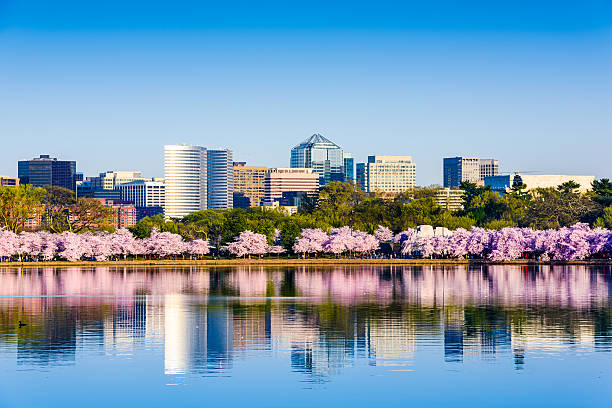
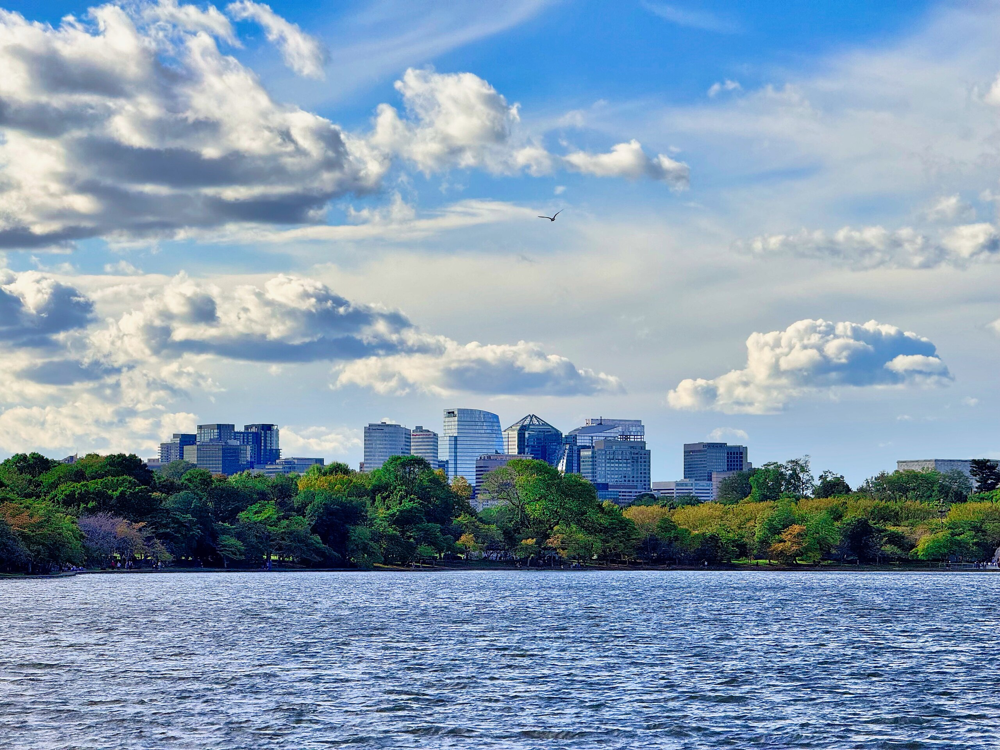
A view of the Arlington, VA skyline across the Potomac River. Arlington’s urban core is just minutes from Washington, D.C., offering an appealing blend of city convenience and suburban comfort.
Are you considering relocating to Arlington, Virginia? This vibrant Northern Virginia community is a top choice for families and professionals alike. Arlington boasts an enviable location just across the Potomac River from Washington, D.C., coupled with a high quality of life, excellent schools, and a strong housing market. In this comprehensive guide, we provide an in-depth look at living in Arlington – from housing prices and market trends to the best Arlington neighborhoods, local amenities, things to do, and comparisons with nearby areas like Alexandria and Fairfax. Read on to learn why Arlington consistently ranks among America’s best places to live and how you can make the most of your move.
Overview of Arlington, VA
Arlington, VA is a dynamic urban county in Northern Virginia known for its unique mix of city and suburb. Home to around 236,000 residents in under 26 square miles, it is the fourth most populous locality in Virginia. Arlington’s location is unbeatable – it sits directly across the Potomac River from downtown Washington, D.C., only about a 15-minute drive or quick Metro ride away. This proximity means many Arlingtonians enjoy short commutes into the nation’s capital while returning home to a community with its own distinct character and charm.
Originally part of the area designated for the U.S. capital, Arlington today is famed for landmarks like the Pentagon and Arlington National Cemetery, underscoring its deep historical and military significance. Despite being classified as a county, Arlington has no incorporated cities or towns; instead, it’s composed of various urban and residential neighborhoods often referred to as “urban villages.” The community expertly blends modern urban lifestyle with a suburban feel, offering high-rise hubs as well as tree-lined residential streets.
Demographics and Atmosphere: Arlington’s population is highly educated and relatively young – the median age is 35, and an impressive 78% of adults hold a bachelor’s degree or higher (with 43% having graduate degrees). Not surprisingly, Arlington consistently ranks among the most educated and best places to live in America. In fact, Niche recently rated Arlington the #4 “Best City to Live in America” for 2024 and 2025, giving it A scores for public schools, good for families, nightlife, and health & fitness. (The only downsides noted were the high housing costs, reflecting the competitive real estate market.) The community prides itself on being inclusive, safe, and civically engaged. Crime rates are low for a city of its size – the chance of being a crime victim is about 1 in 52, which is significantly lower than in most comparable cities. All these factors combine to create an environment that is family-friendly, professional, and vibrant.
Economy and Major Employers: Arlington’s economy is robust and diverse. It benefits from both federal government presence and a growing private sector. Major employers include the U.S. Department of Defense (at the Pentagon), federal agencies, corporate headquarters, and tech companies. The arrival of Amazon’s HQ2 in the Crystal City/Pentagon City area (rebranded as “National Landing”) has further cemented Arlington’s status as a booming job center, attracting thousands of tech and business professionals. With a strong job market (the average pay here is significantly higher than the national average at about $31/hour) and virtually no industry off-limits, Arlington offers plentiful career opportunities in government, defense contracting, IT, consulting, education, research, and more.
In summary, Arlington, VA offers an exceptional quality of life with its strategic location, educated populace, and mix of urban excitement and suburban comfort. Next, let’s dive into the housing market you’ll encounter when relocating to Arlington.
Arlington Housing Market: Prices and Trends
If you’re researching Arlington, VA homes for sale, it’s important to understand the local real estate landscape. Arlington’s housing market is known for being competitive, high-priced, and fast-moving, reflecting the high demand to live in this desirable area. Here’s an overview of housing prices and market trends in Arlington:
- Home Prices: As of early 2025, the median listing home price in Arlington is around $800,000 (approximately $804K in April 2025) and rising about 2% year-over-year. In 2023, despite higher interest rates slowing sales volume, home prices actually increased – the average sale price in Arlington climbed about 6%, from roughly $800K to $850,000. For single-family detached homes, the averages are even higher (around $1.37 million on average), while condos and townhomes tend to be more affordable (often ranging from the high $300Ks for smaller condos to $700K for large modern townhouses, depending on the neighborhood). Overall, Arlington’s home prices are among the highest in the region, reflecting its proximity to D.C. and strong demand.
- Market Trends: Arlington is currently a seller’s market, driven by low inventory and plenty of buyers. In fact, Arlington has had less than 2 months of housing inventory available throughout recent years, well below the level that would cool prices. Homes tend to sell quickly – the average time on market is around 3 to 4 weeks (about 26 days on average), and turnkey properties in hot neighborhoods can get snapped up in just days. Bidding wars for desirable listings are not uncommon. Even with higher mortgage rates in 2023–2024, prices have stayed firm or risen because demand still exceeds supply. Arlington’s appeal insulates it somewhat from market downturns; buyers are often willing to pay a premium for the location and lifestyle.
- Growth Factors: Several factors drive Arlington’s housing market trends. The influx of jobs (e.g. Amazon HQ2 and related businesses) has boosted buyer demand. Arlington’s strict land use (limited space for new single-family development) means new housing supply comes mostly from high-density condo or apartment projects, which take time to deliver. Meanwhile, the population continues to grow modestly and turnover is low – many homeowners simply don’t leave unless necessary. These dynamics keep prices on an upward trajectory. For example, from 2022 to 2023 Arlington saw home price growth around 5–10%, outpacing many other areas. While sudden jumps (“Amazon effect” spikes) have leveled off, the long-term trend is steady appreciation of property values in Arlington.
- Rentals: If you’re not ready to buy, be aware that rents in Arlington are also high. The average rent for a two-bedroom apartment tends to fall in the $2,500–$3,000 per month range. An analysis in late 2024 showed that renting an apartment in Arlington costs around $2,665 per month on average, especially in upscale metro-accessible areas like Ballston or Clarendon. More affordable rents can be found in South Arlington and older buildings, but overall Arlington’s rental market is competitive and pricey – a reflection of the cost of living.
Housing Outlook: What can newcomers expect? In short, prepare for a competitive market. Work with a knowledgeable real estate agent (The Colgan Team, for example) to navigate the fast pace and maybe even get early tips on listings. Have your finances in order, as well-priced homes often receive multiple offers at or above asking. The good news is that investing in Arlington real estate has historically been a smart move – the combination of limited land, desirable location, and robust local economy provides a recipe for continued long-term value growth. Whether you seek a modern condo, a charming bungalow, or a luxury single-family home, Arlington’s market, while pricey, offers opportunities to find your ideal home with the right approach.
Top Arlington Neighborhoods to Consider
One of the great things about Arlington is its diverse array of neighborhoods, each with its own character and appeal. Whether you crave a lively urban scene, a quiet suburban atmosphere, or something in between, Arlington has a community for you. Here’s an overview of some of the best Arlington neighborhoods (often called “urban villages”) that newcomers often consider:
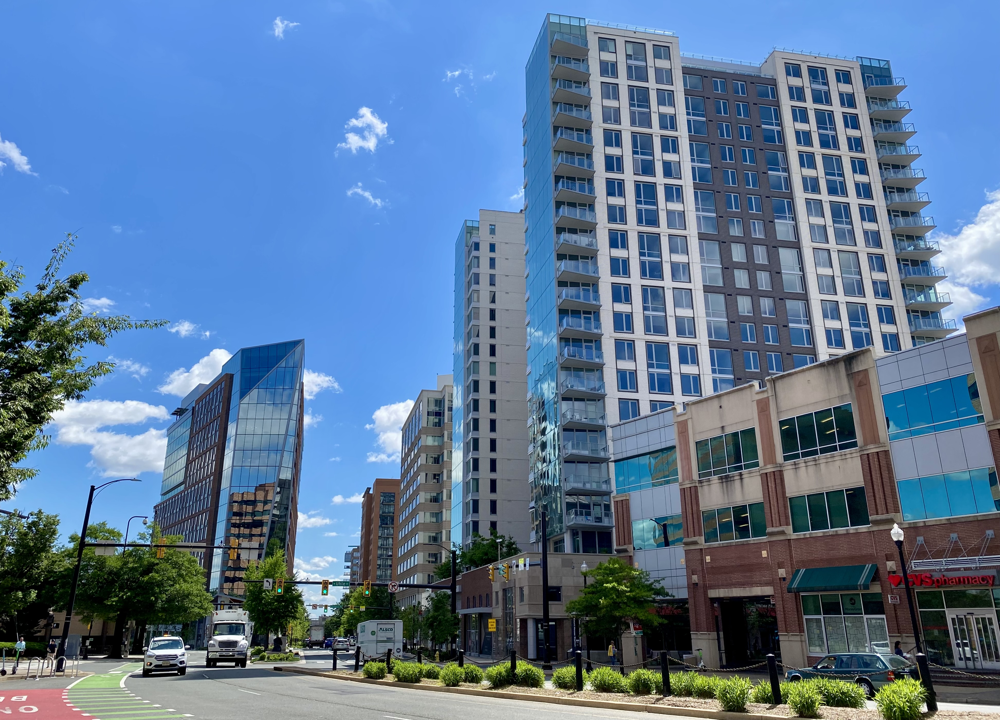
Modern high-rise buildings along Clarendon Blvd in Arlington’s Rosslyn-Ballston corridor reflect the urban appeal of neighborhoods like Courthouse, Clarendon, and Ballston. These areas offer walkable city living with shops, restaurants, and easy Metro access.
- Clarendon/Courthouse: The Clarendon and Courthouse area is arguably the heart of Arlington’s social scene. Centered around the Clarendon Metro station (Orange/Silver line), this neighborhood is known for its vibrant nightlife, dining, and shopping. Trendy restaurants, rooftop bars, coffee shops, and boutiques line Clarendon and Wilson Boulevards. Young professionals love Clarendon for its walkability and energy – it’s not unusual to see the streets busy with diners and bar-hoppers on evenings and weekends. Courthouse, just next door, houses the county government offices and Courthouse Metro station, and offers a similar urban vibe with high-rise apartments and a weekly farmers market. Housing here consists of luxury high-rise condos, newer townhomes, and some charming older bungalows in surrounding Lyon Village (see below). Clarendon’s popularity does come at a price: housing costs are among the highest in Arlington, but many feel the lively “downtown” atmosphere is worth it.
- Ballston–Virginia Square: At the western end of Arlington’s Rosslyn-Ballston corridor lies Ballston, another bustling neighborhood centered on the Ballston Metro. Ballston has undergone a renaissance in recent years with the development of Ballston Quarter, an indoor-outdoor mall and food hall that has become a local hotspot for dining, shopping, and entertainment. This area balances innovation and urban cool with residential comfort – it’s home to research agencies like DARPA and several university campuses, giving it a “smart and hip” vibe. About 75% of Ballston residents are under 45, and the neighborhood is considered one of Arlington’s “fittest,” with over 15 gyms and fitness studios nearby. You’ll find high-rise apartment buildings, condo towers, and some townhouse communities, with quieter residential streets (and parks like Mosaic Park) just a few blocks away. Virginia Square, between Clarendon and Ballston, is a slightly calmer enclave with its own Metro stop, the Arlington Arts Center, and the main public library. Together, Ballston/Virginia Square ranks among the top places to live – Niche even rated it #17 best in the U.S. in 2025. It’s ideal for those who want city conveniences, a quick commute, and plenty of amenities.
- Rosslyn: Located at Arlington’s northeastern tip by the Key Bridge, Rosslyn is the gateway to D.C. (Georgetown is just across the river). Rosslyn’s skyline of tall office and condo towers gives it a downtown, big-city feel. This neighborhood is a major employment center (8 million square feet of office space and growing) with companies and government agencies, and it has a more commercial vibe by day. In recent years, Rosslyn has added luxury apartment buildings and a growing selection of restaurants and outdoor public spaces to liven things up. You can walk to Georgetown, enjoy views of the DC monuments, and access the Metro’s Orange, Silver, and Blue lines. Housing in Rosslyn is primarily upscale high-rise condos and apartments, appealing to professionals who want a quick commute and urban lifestyle. While nightlife is quieter here than Clarendon, Rosslyn offers culture and convenience – including the Artisphere arts center and proximity to Theodore Roosevelt Island’s trails. If you appreciate modern high-rises and stunning views (some condos overlook the Potomac and National Mall), Rosslyn might be for you.
- Crystal City & Pentagon City (National Landing): In the southeastern part of Arlington, Crystal City and Pentagon City form another urban hub, now branded as “National Landing.” This area has gained international attention as the site of Amazon’s HQ2. Crystal City historically consisted of 1960s-’80s era office and residential towers connected by an underground shopping concourse. Today it’s rapidly transforming – older buildings are being redeveloped into modern offices, retail, and residences. There’s a growing restaurant scene and attractions like an outdoor cinema, art installations, and an ice skating rink in winter. Pentagon City, adjacent to the Pentagon, features the Fashion Centre at Pentagon City (a large shopping mall) and several luxury apartment complexes. Both neighborhoods are served by Metro’s Blue/Yellow lines and are within walking distance of Ronald Reagan Washington National Airport – extremely convenient for travel. Housing is largely high-rise condos and apartments, with some townhomes in surrounding subdivisions like Arlington Ridge. The vibe here is urban and in-flux, with great potential thanks to Amazon and other employers moving in. New parks and a pedestrian bridge to the D.C. side of the river are in development, enhancing the area’s appeal. For those who want an evolving, transit-oriented neighborhood (and perhaps a slightly more affordable condo than in the Rosslyn-Ballston corridor), Crystal City/Pentagon City is a compelling option.
- Shirlington: Shirlington offers a completely different atmosphere – often described as a charming village feel. Located in south Arlington (just off I-395, a few miles from Pentagon City), Shirlington doesn’t have a Metro station, but it has a cozy, walkable downtown known as Shirlington Village. Here you’ll find a pedestrian promenade of cafes, restaurants, and boutique shops, along with the award-winning Signature Theatre (a renowned regional theater), a cinema, and the Shirlington Branch Library. Shirlington has a strong arts and entertainment identity and is popular among those who want a small-town vibe within the city. Housing around Shirlington is a mix of townhouse communities, garden-style condos, and apartments, many of which are relatively more affordable for Arlington. The neighborhood is also very dog-friendly (there’s a big off-leash dog park that draws residents from all over). Families and young professionals alike enjoy Shirlington for its sense of community, plentiful parks and trails (the W&OD trail runs right by), and easy access to both Arlington and Alexandria. It’s a great choice if you prefer a slightly quieter lifestyle but still want great dining and theater at your doorstep.
- Lyon Village & North Arlington neighborhoods: Arlington isn’t all high-rises; there are also beautiful leafy neighborhoods with single-family homes. Lyon Village is one such coveted area – just north of Clarendon, it’s an affluent residential neighborhood with elegant 1920s-1940s homes (Colonials, Cape Cods, etc.) on tree-lined streets. With a population around 4,200, Lyon Village is popular with families and established professionals. Residents enjoy a quick walk into Clarendon’s shops and Metro, while living in a quieter setting with parks and top-rated neighborhood schools. Similarly, Cherrydale, Country Club Hills, Donaldson Run, and Yorktown are other North Arlington neighborhoods known for their suburban charm, safety, and high-quality housing (albeit at very high price points). These areas feature spacious single-family homes, well-regarded public schools, and community amenities like playgrounds and swim clubs. They may require a car to get around (less walkable), but offer a retreat from the busier Metro-corridor while still being just a short drive from everything.
- Other Notables: Arlington has many more neighborhoods each with unique features. Colonial Village, a garden condo community near Rosslyn, was actually rated the #1 Best Place to Live in America by Niche in 2024 and 2025 for its mix of convenience, community, and charm. Westover and Fairlington are known for tight-knit communities and adorable brick townhomes/duplexes from the WWII era. Columbia Pike corridor (South Arlington) is a diverse, up-and-coming area with new development and an international food scene. Bluemont and Ashton Heights are pleasant neighborhoods balancing access to Ballston with a quieter feel (and have highly rated schools and parks). No matter what lifestyle or housing type you’re looking for, chances are Arlington has a neighborhood that fits your needs – from urban high-rise living to tranquil suburban streets.
Local Amenities and Quality of Life in Arlington
One reason Arlington ranks so highly in livability is its outstanding local amenities and quality of life. Residents enjoy the best of both worlds: immediate access to Washington, D.C.’s world-class cultural institutions, AND a bounty of community amenities right at home in Arlington. Here’s an overview of what makes daily life in Arlington comfortable and enriching:
Parks and Outdoor Spaces: 
Arlington takes its parks seriously – and it shows. The county’s park system is consistently rated among the top in the nation. In 2024, Arlington was ranked #5 in the U.S. for park access and quality (and has been top-5 since 2018). An incredible 99% of Arlington residents live within a 10-minute walk of a park, which speaks to the community’s thoughtful planning. There are over 150 parks ranging from small neighborhood playgrounds to large regional parks. Popular green spaces include Theodore Roosevelt Island (a natural oasis in the Potomac accessible from Rosslyn), Potomac Overlook Regional Park with nature trails, Long Bridge Park near Crystal City (sports fields and views of DC), and Glencarlyn Park in south Arlington (woods, picnic areas, and a dog park). Families love Lacey Woods Park and Bluemont Park for their facilities, and Lubber Run Park even has an amphitheater for free summer concerts. Arlington’s commitment to parks means you’re never far from a place to jog, bike, play sports, or relax outdoors. It also fosters a tight-knit community vibe – you’ll often find neighbors gathering for movies in the park, kids’ soccer games, or just chatting while walking dogs. If you enjoy an active lifestyle, you’ll feel right at home in Arlington, which has been called the “fittest city in America” in part due to its abundant outdoor recreation options.
Transportation and Commute: 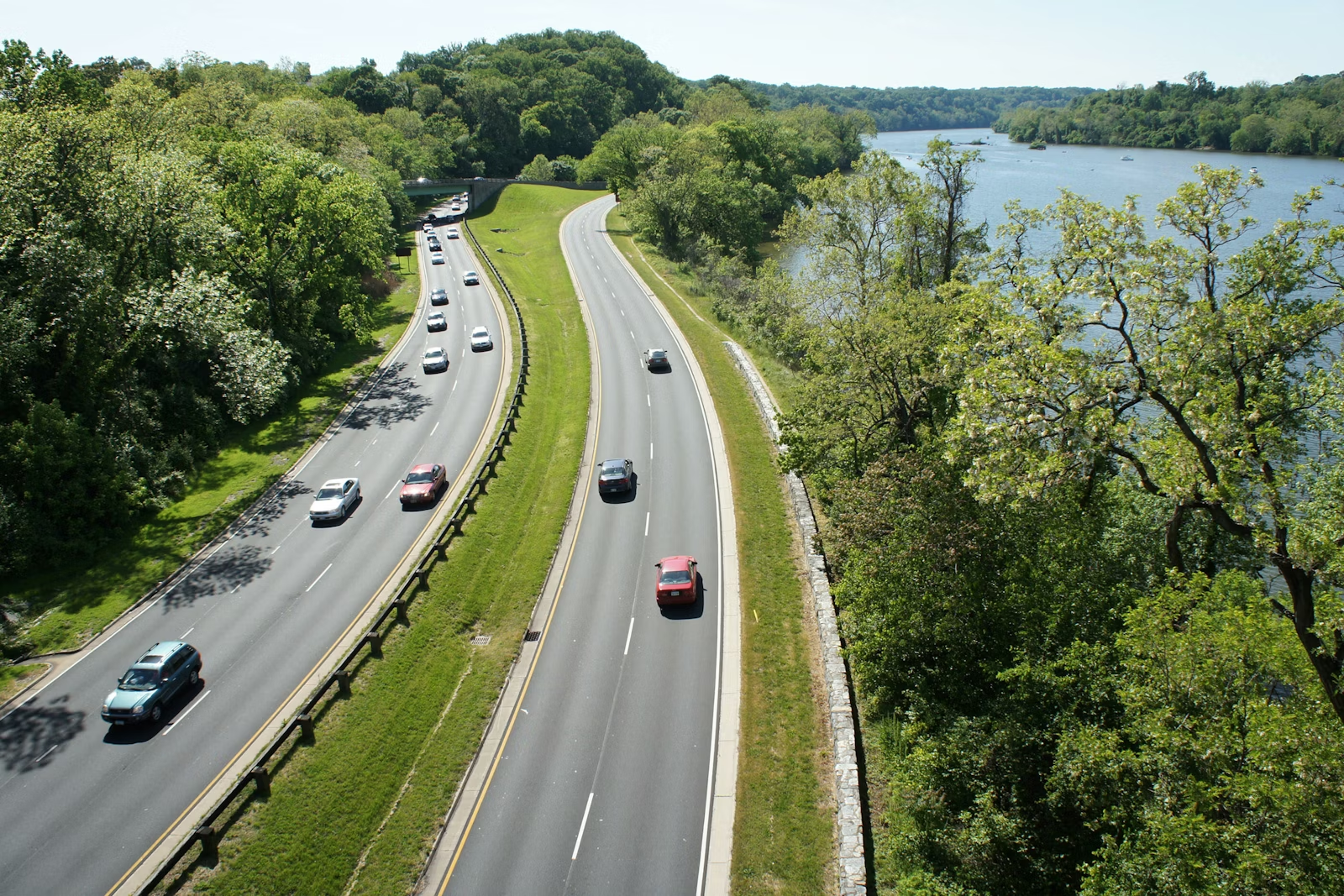
Arlington offers excellent transportation infrastructure that makes getting around without a car quite feasible, a rarity in many American suburbs. The Washington Metro has multiple lines serving Arlington – the Orange and Silver Lines run through Rosslyn, Courthouse, Clarendon, Virginia Square and Ballston, while the Blue and Yellow Lines run through Pentagon City, Crystal City, and Reagan National Airport (with transfer points at Rosslyn and Pentagon). In total, there are about 11 Metro stations in Arlington County, ensuring most dense neighborhoods have a nearby station. Metro and the local bus system (ART and Metrobus) provide quick access into D.C. and throughout the region. Many residents commute via Metro or bike, avoiding the area’s infamous traffic jams.
For drivers, Arlington is crisscrossed by major routes like Interstate 66, I-395, U.S. Route 50, and the George Washington Memorial Parkway, which offer direct routes into the District or out to Virginia’s suburbs. During rush hour these roads are congested, but the actual distances are short – downtown D.C. is only 3–8 miles from most of Arlington. Arlington also promotes car-lite living through bike lanes and trails: the county is extremely bike-friendly, with trails such as the Mount Vernon Trail (along the Potomac), Custis Trail/W&OD Trail (an extensive rail-trail through Arlington and beyond), and many on-street bike routes. Capital Bikeshare stations dot the neighborhoods for easy bike rentals. Walkability is another strong suit – areas like Clarendon, Ballston, Crystal City, and Shirlington are very walkable, with grocery stores, cafes, and daily needs within steps. In summary, Arlington offers short and convenient commutes – a huge perk for professionals working in D.C. or nearby. You can trade a long suburban drive for a 15-minute train ride or even a quick bike commute, giving you more free time and less stress.
Shopping and Dining:
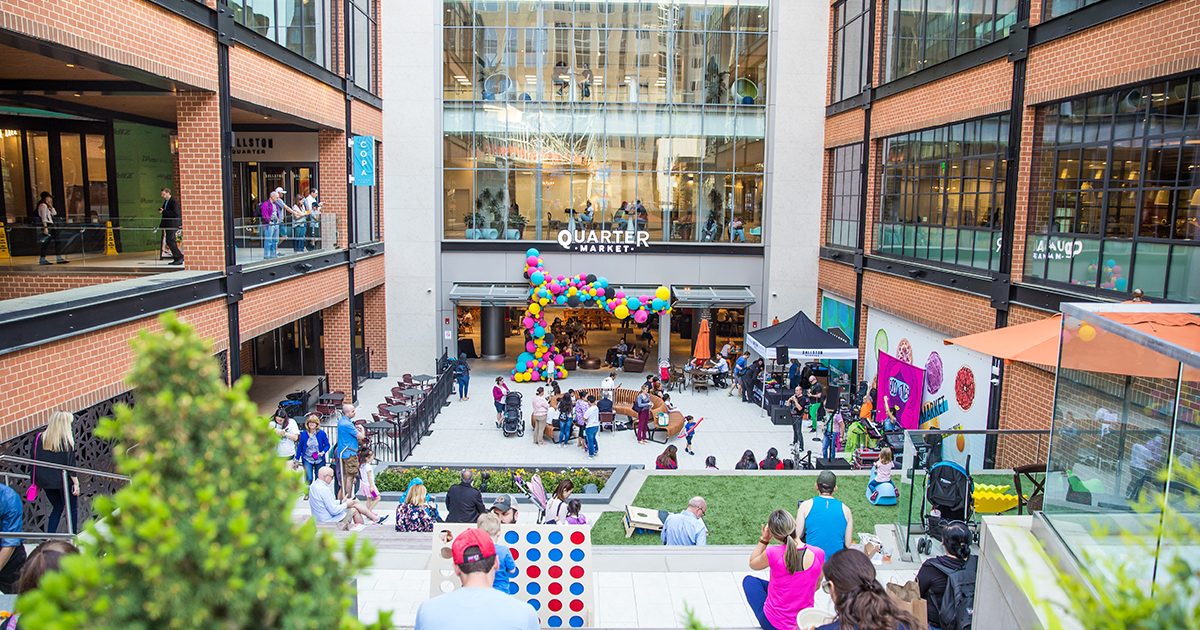



Arlington’s residents enjoy a wealth of shopping and dining options, from everyday conveniences to upscale experiences. For shopping, there are several hubs: Pentagon City’s Fashion Centre is a large indoor mall with national retailers. Ballston Quarter is a newly redeveloped mall with trendy shops and an open-air feel. Clarendon has a mix of national chains (Apple Store, Whole Foods, Crate & Barrel) and independent boutiques along its streets. Shirlington Village features smaller shops (bookstores, local art, pet boutiques) in a cozy setting. Additionally, being next to D.C. means Georgetown’s M Street shopping district is just across the river for even more options. Everyday needs are easily met – grocery stores, pharmacies, and services are plentiful (each neighborhood has its own cluster, and bigger stores like Target, Costco, and Harris Teeter are present in the county).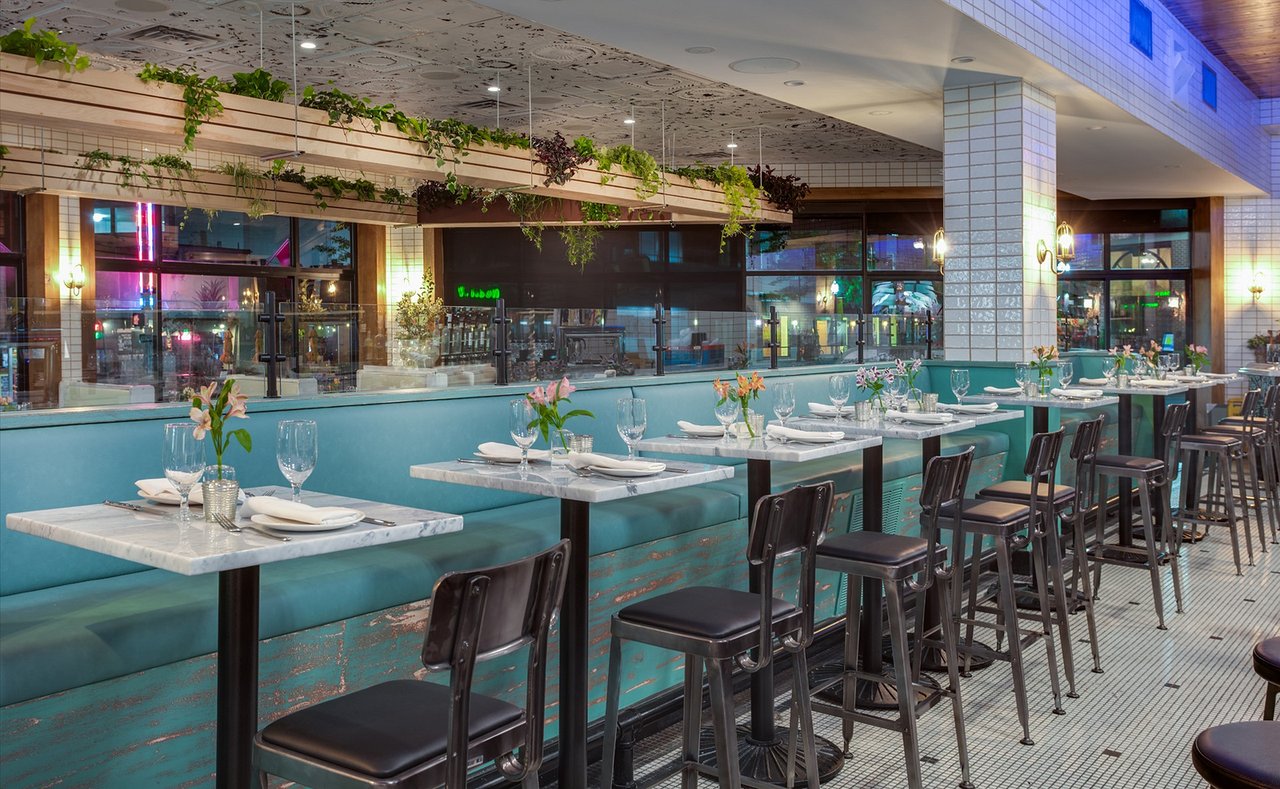
When it comes to dining, Arlington punches above its weight. There are 80 restaurants within a five-block radius in Ballston alone ranging from Belgian to Mexican, and that’s just one neighborhood. Clarendon is known for its brunch spots, rooftop bars, and a mix of international cuisine (Thai, Vietnamese, Italian, the famous Texas Jack’s BBQ). Crystal City and Pentagon City have a growing food scene including trendy eateries and craft beer halls catering to the new tech crowd. You can find everything from fine dining (steakhouses, seafood) to food trucks and authentic ethnic eateries, especially along the Columbia Pike corridor (which is Arlington’s “International Row” for Ethiopian, Afghan, Latin American, and more). Arlington’s diversity shines through its food. Some local favorites include Ambar (Balkan small plates) and Cava Mezze in Clarendon, Rus Uz (Russian/Uzbek cuisine) in Ballston, Green Pig Bistro and Liberty Tavern, and the Shake Shack in Pentagon City for casual bites. Whether you’re a foodie looking for the next hip restaurant or a family seeking kid-friendly dining, Arlington delivers myriad choices. Plus, if you somehow exhaust your options, the culinary delights of D.C.’s neighborhoods are a very short trip away.
Arts, Culture, and Entertainment: 
Arlington might not be a large city, but it has a vibrant arts and culture scene. The Signature Theatre in Shirlington is a Tony Award-winning regional theater producing Broadway-quality musicals and plays in an intimate setting. Arlington also is home to the Synetic Theater (known for innovative physical theater) in Crystal City. For art lovers, the Museum of Contemporary Art Arlington (formerly Arlington Arts Center) in Virginia Square showcases modern art exhibitions and hosts studios for local artists. The county sponsors public art installations, murals, and events (check out the annual Arlington Arts Festival each April). Live music can be enjoyed at various bars and the Rosslyn Jazz Fest every September, which draws big crowds and notable jazz acts. Arlington also celebrates its diversity with events like the Columbia Pike Blues Festival, and you’re just minutes from D.C.’s countless museums, theaters, and concert venues – meaning you’ll never run out of cultural activities.
For more casual entertainment, Arlington has a lively nightlife especially in Clarendon, which features popular bars and lounges. Spots like Spider Kelly’s (sports bar with games) and The Lot (beer garden) are go-to hangouts. In Ballston, you can catch a Washington Capitals hockey practice at the MedStar Iceplex or go bowling. Arlington also hosts fun seasonal events and festivals that bring the community together: for instance, Clarendon Day (an annual street festival each fall with music, food, and family fun), the Arlington County Fair in August (rides, carnival games, and food for all ages), and holiday events like neighborhood tree lightings. Being adjacent to the nation’s capital, Arlington also has the unique perk of front-row seats to events like the Cherry Blossom Festival and July 4th fireworks – many Arlington parks on the river have spectacular views without the D.C. crowds.
Healthcare: 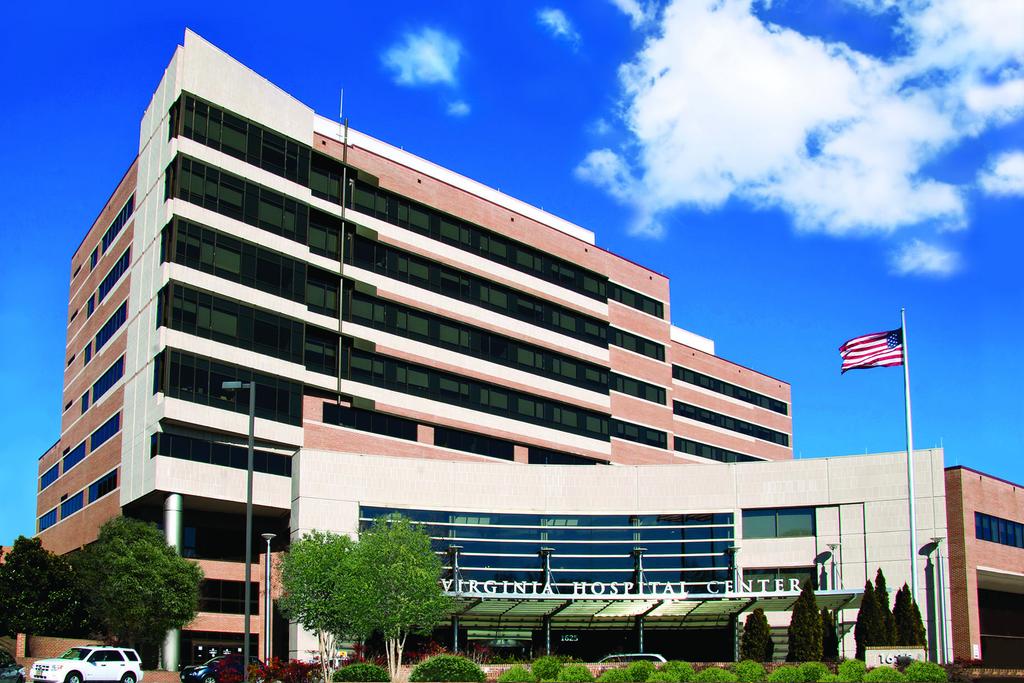
Access to quality healthcare is an important factor for families and professionals. Arlington is served by the acclaimed Virginia Hospital Center (VHC Health), a 394-bed hospital recently affiliated with the Mayo Clinic network. VHC is regularly ranked as one of the best hospitals in the Washington metro area, offering comprehensive medical services, a Level II Trauma Center, and excellent maternity care (many D.C. families actually come to Arlington to give birth!). Additionally, Arlington has numerous clinics, urgent care centers, and specialists. For any advanced care needs, some of the nation’s top hospitals (Georgetown University Hospital, GW Hospital, Children’s National, etc.) are a short drive or Metro ride away in D.C. – but many residents find they can get all routine and specialty care right in Northern Virginia. The region is a hub for medical professionals, meaning you have plenty of choice for primary care, dental, pediatric, and veterinary services in every neighborhood.
Public Services and Community: Arlington County is known for its well-run public services. The public library system is excellent, with a central library in Virginia Square and branches like Shirlington and Westover that offer a range of community programming (storytimes, workshops, etc.). The parks department maintains not only parks but also community centers, dog parks, and recreational facilities. Arlington even has free outdoor Wi-Fi in certain public areas and initiatives for environmental sustainability (e.g., widespread recycling, bike share, and nature center programs). The sense of community is strong – each neighborhood often has civic associations that host events (like yard sales, block parties, holiday decorating contests). Neighbors are engaged and friendly, often bonding over school events or weekend farmers markets. Simply put, quality of life in Arlington is top-notch – residents enjoy a clean, green, and connected community with amenities that rival much larger cities.
Things to Do in Arlington, VA
When you’re not working or school is out, what is there to do in Arlington? Plenty! While Arlington is sometimes overshadowed by D.C.’s attractions, it offers its own rich array of museums, dining, nightlife, outdoor activities, and seasonal events. Plus, the best of D.C. is at your doorstep. Here are some of the top things to do and experience in and around Arlington:
Historical Sites and Museums: 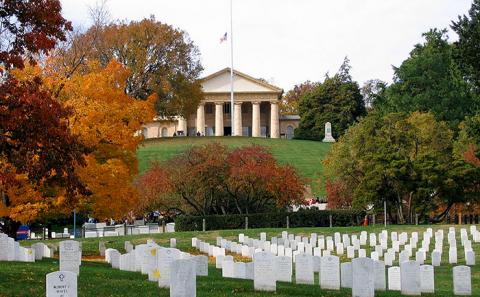
Arlington is steeped in history. A must-visit is Arlington National Cemetery, the nation’s most hallowed military resting place, where you can see the Eternal Flame at President John F. Kennedy’s gravesite and witness the Changing of the Guard at the Tomb of the Unknown Soldier. Within the cemetery grounds is Arlington House (The Robert E. Lee Memorial), offering historic insight and one of the best views of Washington. Adjacent to Arlington Cemetery is the U.S. Marine Corps War Memorial (Iwo Jima Memorial) – an iconic statue commemorating Marines in WWII. Another significant site is the Pentagon; while tours of the Pentagon require advance arrangement, anyone can visit the Pentagon 9/11 Memorial outside, a moving tribute to the lives lost in 2001.
Although the Smithsonian museums are across the river, Arlington has some unique museums as well. The DEA Museum near Pentagon City explores the history of drug law enforcement. In Crystal City, you’ll find the Museum of Contemporary Art Arlington as mentioned, plus the playful Synetic Theater for a different kind of artistic experience. And remember, D.C.’s incredible museums (Natural History, Air & Space, National Gallery of Art, etc.) are a short Metro ride away – many Arlington residents take frequent advantage of these free world-class institutions. Living in Arlington means having the Smithsonian, National Mall, Capitol, and more as essentially an extension of your backyard.
Dining and Nightlife: We touched on Arlington’s dining scene in the amenities section, but it’s truly one of the pleasures of living here. You could spend weeks exploring the restaurants of Arlington and still have new cuisines to try – from cozy cafes to celebrity-chef eateries. Some dining highlights: Ambar Clarendon for endless Balkan small plates, Pupatella for award-winning Neapolitan pizza (Ballston), Ruthie’s All-Day in Shirlington for Texas-style smoked meats and comfort food, and Kabob Palace in Crystal City, a beloved 24/7 Afghan kabob joint. For sweet treats, check out Out of the Bubble Bakery (gluten-free desserts) or the local farmers markets for fresh pastries.
After dinner, Arlington’s nightlife awaits, especially if you’re in your 20s/30s and enjoy a social scene. Clarendon is the epicenter – try spots like Clarendon Ballroom (rooftop dance venue), Spider Kelly’s (laid-back bar with games) or Wilson Hardware (trendy multilevel lounge). In Courthouse, beer enthusiasts hit Courthouse Social or Ireland’s Four Courts (a classic Irish pub). Ballston has added bars like WHINO, an art-gallery-meets-bar, and Punch Bowl Social with arcade games and bowling. Live music is often found at smaller venues or during events – for example, Rhodeside Grill hosts live bands and Galaxy Hut in Courthouse is known for its eclectic music nights. If you’re into board games or something different, The Board Room in Clarendon lets you play games with friends over drinks. And for a truly unique Arlington night out, don’t miss Salsa night at The Renegade in Clarendon – live music and dancing that’s a blast even for beginners. Whether you prefer a relaxed brewery (try New District Brewing near Shirlington) or a chic cocktail bar, Arlington’s nightlife offers options to fit every mood.
Outdoor and Family Activities: Arlington’s outdoor recreation deserves another mention in the context of fun things to do. Families can enjoy countless playgrounds and splash pads (Lubber Run Amphitheater Park is great for summer water play followed by a kid-friendly concert). Bike the scenic Mount Vernon Trail along the Potomac, which runs from Arlington down to George Washington’s Mount Vernon estate – you’ll get breathtaking views of DC monuments along the way. Runners can take on the Army Ten-Miler or the full Marine Corps Marathon, both major races that course through Arlington’s streets each fall. If you like team sports, Arlington’s rec leagues are very active (from adult kickball to youth soccer). Nature lovers should visit Gulf Branch Nature Center or Long Branch Nature Center, which have trails and live animal exhibits (turtles, owls, etc.) – perfect for kids.
Arlington also hosts fun seasonal events and festivals throughout the year. In spring, when the cherry blossoms bloom, many Arlingtonians head to Gravelly Point Park or Long Bridge Park to view the blossoms and DC skyline without the crowds. Summer brings the Rosslyn Cinema outdoor movie series and neighborhood block parties. Fall is festival season: Clarendon Day in September is a huge street festival with music, food vendors, and activities for all ages. There’s also Yorktown’s Octoberfest and various Halloween events (including the famous Healy Family Halloween House in Ashton Heights that draws visitors regionwide!). In December, Holiday Lights on the Potomac sees the Pentagon City area lit up, and neighborhoods like Aurora Highlands organize lovely holiday home decoration tours. Simply put, there’s always something happening in or near Arlington – you can be as busy and involved as you want to be. And whenever you seek more, the theaters, sports events (Capitals, Nationals, etc.), and nightlife of D.C. are just across the river waiting.
In summary, Arlington offers a rich tapestry of activities: historical exploration, endless dining, social nightlife, abundant outdoor adventures, and community celebrations. Boredom is not an option here!
Arlington’s School System
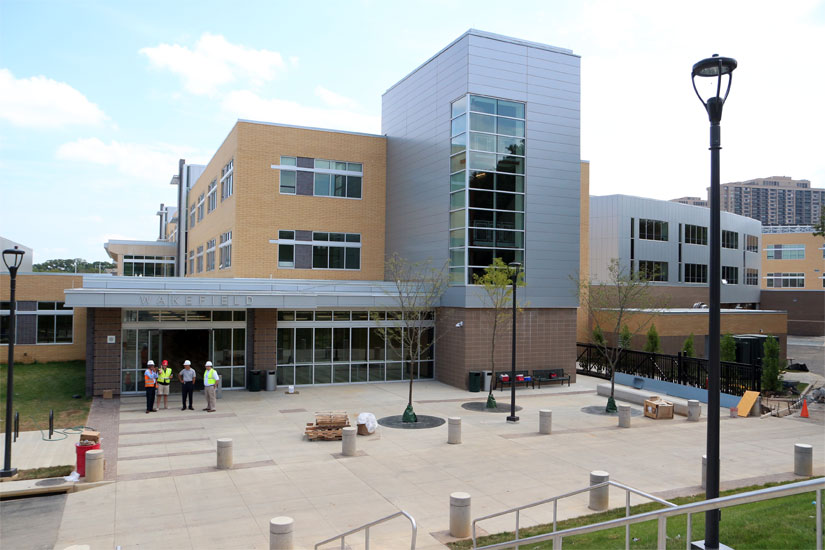
For families (and even resale value considerations for professionals without kids), schools are a huge factor in relocating. Arlington shines in this area, with a public school system that is among the best in Virginia and highly regarded nationally. Here’s an overview of Arlington’s schools and educational appeal:
Arlington Public Schools (APS) operates the county’s public schools and serves about 27,000 students across 37 schools (including 24 elementary, 6 middle, 4 high schools, and specialized programs). APS has a reputation for excellence and innovation. It consistently achieves top rankings in the state – in fact, Arlington Public Schools was recently ranked #2 Best School District in Virginia (only behind the much smaller Falls Church City). Niche gives APS an overall A grade, with particularly high marks in academics, teachers, college prep, and extracurriculars. For families, this translates to confidence that their kids will receive a quality education in Arlington.
Some highlights of Arlington’s school system:
- Academic Performance: Arlington students perform well above state and national averages. The graduation rate is about 95%, and the average SAT score for APS students is an impressive 1270. Approximately 92% of graduates pursue higher education – a testament to the college-readiness emphasis. Arlington’s three comprehensive public high schools (Washington-Liberty, Yorktown, and Wakefield) offer robust Advanced Placement (AP) and International Baccalaureate (IB at Washington-Liberty) programs, boasting dozens of AP courses and high pass rates. These high schools are regularly listed among the top high schools in Virginia; e.g., Washington-Liberty High was ranked #3 in the state and Yorktown #9 in the state by Niche for 2025. Even the third high school, Wakefield, earned an A- grade and sends many students to college.
- Elementary and Middle Schools: Arlington’s elementary and middle schools are also highly rated, often featuring in “top schools” lists. Small class sizes (especially in lower grades) and rich resources are common. There are several sought-after elementary schools like Jamestown, Tuckahoe, and Arlington Traditional, each recognized for strong test scores and parent satisfaction. Many Arlington elementaries receive 9/10 or 10/10 scores on GreatSchools. Importantly, nearly every neighborhood is zoned to a well-regarded school, which means there are few “bad” choices – a relief for families comparing addresses. APS also offers options such as Montessori programs, language immersion (Spanish at Key Elementary and Claremont, for example), and expeditionary learning magnets. This breadth of programs allows students to thrive in different learning environments if the standard neighborhood school isn’t the perfect fit.
- Special Programs: A standout feature of APS is its range of special programs and choice schools. Besides the aforementioned Montessori and immersion programs, Arlington has H-B Woodlawn Secondary Program, a nationally recognized alternative 6-12 program known for its progressive, student-driven education (sometimes dubbed a “hipster high school” with no formal principal’s office and first-name basis culture). There’s also the Arlington Tech program at the Career Center, offering STEM-focused education with hands-on projects and college credits. The county supports special education robustly and has programs for gifted students, as well as the Thomas Jefferson High School for Science & Technology (TJ) just over the border in Fairfax County, which Arlington students can test into (TJ is often ranked the #1 high school in the nation). In short, Arlington provides academic opportunities on par with elite private schools, but in a public school setting.
- School Facilities and Teachers: Arlington has been investing heavily in modernizing and expanding its school facilities to keep up with enrollment growth. Many schools have new or renovated buildings equipped with cutting-edge technology, science labs, and arts spaces. The teachers in Arlington are highly qualified – over 75% hold advanced degrees, and APS was ranked the #1 place to teach in Virginia by Niche, which helps attract and retain top teaching talent. The student-to-teacher ratio is around 15:1, allowing for individual attention. Arlington also offers extensive extracurriculars: championship sports teams, music programs (the marching bands are great), debate, robotics clubs, you name it. For parents, active PTA organizations and community involvement mean you can engage deeply with your child’s school.
- Private and Other Schools: While APS is excellent, Arlington also has a number of private schooling options if desired – from faith-based schools to elite preparatory academies. Examples include St. Thomas More Cathedral School (Catholic K-8), Gonzaga College High School and others in nearby D.C., and Potomac School or Bishop O’Connell High School just outside Arlington. Additionally, Arlington residents often take advantage of magnet and governor’s schools in the region (like the aforementioned TJHSST or the Academies of Loudoun for STEM). However, with public schools as good as Arlington’s, many families happily choose APS.
Overall, Arlington’s family appeal is strongly tied to its schools. The combination of high-performing public schools, a range of educational choices, and safe, enriching school environments makes Arlington a magnet for parents who want the best for their kids. When comparing to other areas (as we will next), Arlington’s schools give it a clear edge over many communities.
Arlington vs. Nearby Areas: Alexandria and Fairfax
The D.C. metro area has several popular jurisdictions – notably Arlington, Alexandria, and Fairfax County in Northern Virginia. If you’re relocating to the region, you might be weighing Arlington against these neighbors. Here’s a quick comparison in terms of housing, amenities, and schools to help you understand the differences:
Housing and Cost: Arlington, Alexandria, and Fairfax all offer attractive neighborhoods but at different price points and densities. Arlington’s housing is, on average, the priciest per square foot due to its close-in location and urban demand. The median sale price in Arlington is around $700K , while Alexandria’s median home price is a bit lower (around $620K), and Fairfax County’s median is roughly in between (around $730K). In Arlington you’re often paying for a smaller lot or condo; Alexandria (the city of Alexandria) has a mix of condos and historic rowhomes that can be slightly more affordable than Arlington’s newer units. Fairfax County, being vast and suburban, has the widest range – from relatively affordable townhouses/condos in areas like Centreville or Herndon, to multimillion-dollar estates in McLean or Great Falls. Generally, your budget stretches further in Fairfax in terms of house size and yard, but you sacrifice walkability and add to your commute. Alexandria offers the charm of Old Town with its colonial-era homes and a bit more value for money compared to Arlington for similar townhouse properties. However, keep in mind property taxes too: all three have similar tax rates, but on a higher-priced Arlington home you’ll pay more annually. If you crave a single-family home under $800K, you’ll find more options in Fairfax’s suburbs. If you’re content with a condo or duplex, Arlington and Alexandria both have plenty, with Alexandria’s tending to cost slightly less. In short, Arlington is generally the most expensive of the three (especially for buying a house), with Alexandria close behind, and Fairfax ranging from moderate to high depending on the locale.
Lifestyle and Amenities: All three areas boast great amenities, but with different atmospheres. Arlington vs. Alexandria: Arlington is more modern urban, with its high-rise corridor and vibrant nightlife, whereas Alexandria is known for historic charm and a slower pace in many neighborhoods. For example, Alexandria’s crown jewel, Old Town Alexandria, features cobblestone streets, 18th-century buildings, and a waterfront – offering boutique shopping and fine dining in a preserved historic setting that Arlington doesn’t have. However, Arlington’s urban villages (Clarendon, etc.) are more contemporary – if you prefer new developments, trendy eateries, and a youthful scene, Arlington leads. Both Arlington and Alexandria have good walkability in their core neighborhoods and direct Metro access to D.C. – Alexandria’s Metro stations (like King Street, Braddock Road) primarily serve the northern part of the city, whereas Arlington’s are spread throughout. Alexandria has a larger geographic footprint and includes some very suburban-feeling sections (western Alexandria feels like Fairfax, with malls and car-centric strips). Arlington is more uniformly urbanized. Fairfax County, by contrast, is predominantly suburban. It’s a huge county that includes everything from dense “edge cities” like Tysons Corner (a major business/shopping district with Metro) to rural horse country out near the Loudoun border. Amenities in Fairfax tend to be more spread out – you drive to large shopping centers or parks rather than walking. Fairfax does have world-class shopping (Tysons Corner Center is one of the nation’s largest malls, and Mosaic District in Merrifield is a newer urban-style town center). Culturally, Fairfax has Wolf Trap National Park for the Performing Arts (an outdoor concert venue) and the Smithsonian’s Air & Space Udvar-Hazy Center near Dulles Airport. But if you want city-like convenience, restaurants on your block, and not needing a car daily, Fairfax can’t match Arlington or Alexandria. Conversely, if you want a big yard, a two-car garage, and quieter streets, Fairfax shines.
Schools: We’ve discussed Arlington’s excellent schools. How do Alexandria and Fairfax compare? Fairfax County Public Schools (FCPS) is one of the nation’s largest and most acclaimed school systems, regularly in top national rankings. It has many high-performing schools, including Thomas Jefferson High (a magnet school often ranked #1 in the U.S.) and multiple Blue Ribbon schools. On average, Fairfax schools are very strong – in state rankings, FCPS usually has several districts and schools in the top tier, though because of its size and diversity, the performance can vary regionally. Generally, families can’t go wrong with Fairfax schools, especially in the affluent areas (Langley HS, McLean HS, Chantilly HS, etc. are all highly regarded). Arlington’s advantage is that all its schools are consistently high-quality and it’s a smaller system with more personalized attention. Fairfax offers a huge breadth of programs but perhaps not as uniformly across the board (some FCPS schools in lower-income areas don’t perform as high, whereas nearly all APS schools do well). Alexandria City Public Schools (ACPS), on the other hand, has historically lagged behind both Arlington and Fairfax. Alexandria has fewer schools (one big public high school, Alexandria City HS, formerly T.C. Williams). While there are some bright spots (Maury and Lyles-Crouch are well-regarded elementary schools, for instance), ACPS has faced challenges with overcrowding and mixed test results. Niche’s rankings typically put Alexandria’s district quite a bit lower than Arlington/Falls Church/Fairfax. That said, Alexandria is investing in improvement, and some families do choose its schools for the diversity and unique programs. But if top-tier public schools are a priority, Arlington and Fairfax have the stronger reputations (Arlington #2 in VA, Fairfax also usually top 5, whereas Alexandria isn’t near the top). Many Alexandria families consider private schools or magnet programs if they have concerns.
Community and Lifestyle Considerations: Think about what kind of community you want. Arlington offers an almost “urban-lite” lifestyle – very high volunteerism and community events, but can feel transient due to the large young professional population (people often move in and later upsize out to Fairfax when they have kids, though many do stay). Alexandria has a bit more of a traditional community feel, especially in neighborhoods that have been around for centuries. There’s pride in local history and a strong arts scene. Fairfax varies – some areas have a small-town vibe (Vienna, Herndon), others are pure suburbia. If you work in DC, Arlington and Alexandria cut your commute significantly relative to most of Fairfax. If you need to commute to tech hubs like Reston or Chantilly, living in Fairfax might make more sense. Cost-wise, note that Arlington and Alexandria have a 5% meals tax on restaurant dining on top of sales tax, whereas Fairfax doesn’t – a small thing, but noticeable if you dine out often.
In the end, each locale has its pros and cons. Arlington often wins for those who want to be as close to DC as possible without sacrificing schools or safety – it’s the priciest but offers amazing convenience and amenities. Alexandria appeals to those charmed by history or who find Arlington a tad too new or expensive; it has its own downtown (Old Town) and can be a touch more affordable, but schools are a drawback. Fairfax County attracts those needing more space, a bit more distance from urban hustle, and perhaps a slightly lower cost per square foot – it has fantastic communities especially for families, but you’ll be driving more and your “going out” options might not be walking distance. Many people’s trajectory is actually to enjoy renting in Arlington or Alexandria in their younger years, then move to Fairfax for more house later when starting a family – but plenty of families also happily thrive in Arlington and Alexandria condos or townhomes, trading space for location. Consider your priorities: budget, commute, lifestyle, schools, and you’ll make the right choice. And remember, all these areas are relatively close – living in Arlington doesn’t mean you can’t enjoy a weekend in Old Town Alexandria, or living in Fairfax means you won’t dine in Clarendon occasionally. Northern Virginia offers rich experiences everywhere.
Frequently Asked Questions (FAQs) about Moving to Arlington, VA
To wrap up, here are answers to ten frequently asked questions people have when considering a move to Arlington, Virginia:
- What is the cost of living in Arlington, VA?
Arlington’s cost of living is high – about 37% higher than the Virginia average and well above the U.S. average. Housing is the biggest factor (with median home prices around $800K and one-bedroom rents around $2,000 ). Other costs like groceries, healthcare, and transportation also trend above national norms. However, Arlington’s median household incomes are also higher to match (many dual-income professional families). In short, you’ll pay a premium to live in Arlington – from real estate to a night out – but you’re paying for proximity to DC, top schools, low crime, and great amenities. For many, the benefits outweigh the costs, but budget accordingly. - How expensive are homes in Arlington and what are my options?
Homes in Arlington are more expensive than most U.S. markets. As of 2025, the median listing price is around $800K, and the average sold price is about $850K. That said, prices range widely: studios or one-bedroom condos can sometimes be found in the $300Ks to $500K range; larger two-bedroom condos and townhomes often fall between $600K and $900K; and single-family detached homes typically start around $800K (for an older small bungalow) and climb into the millions for bigger or newer builds. Arlington has a lot of condominiums (high-rise and garden style) and townhouses, which are popular with young professionals and downsizers. These offer more affordable entry points into the market compared to detached houses. The priciest homes tend to be North Arlington single-family houses in neighborhoods like Country Club Hills, some of which top $2–3 million. If you’re open to South Arlington or a condo, there are relatively more moderate options. Many newcomers start with a condo or townhouse and later move up to a house as budgets allow. Working with a knowledgeable local Realtor is key to finding something in your price range, as the market is competitive and inventory limited. - What are the best neighborhoods in Arlington, VA?
“Best” depends on your needs, but a few Arlington neighborhoods consistently rank highly: Clarendon/Courthouse (for young professionals who want nightlife, dining, and Metro convenience), Ballston/Virginia Square (urban amenities, tech hub energy, and lots of new development), Rosslyn (closest to DC, luxury high-rises, great views), Crystal City/Pentagon City (up-and-coming urban area with new Amazon-fueled growth), Shirlington (arts, dining, and a village feel, popular with families and dog lovers), and Lyon Village or Country Club Hills (prestigious single-family home neighborhoods with top schools, great for families). Each has pros and cons: Clarendon and Ballston have the most action but also higher price per sqft; Shirlington and Fairlington are more affordable but lack Metro; North Arlington suburbs offer space and schools but less walkability. Many people also love Colonial Village (a quiet condo community near Rosslyn), Aurora Highlands (family area near Pentagon City), and Cherrydale (charming and community-oriented). It’s best to explore a few areas in person – Arlington is compact, so you can visit multiple neighborhoods in a day to get a feel for which one feels like home. - Is Arlington, VA a good place for families?
Absolutely yes – Arlington is often cited as one of the best places to raise a family. The combination of excellent public schools (APS is among the top in the state), abundant parks and playgrounds (99% of residents live near a park), low crime, and family-friendly amenities (libraries, museums, sports leagues) make it ideal for families. Arlington’s neighborhoods like Lyon Village, Waycroft-Woodlawn, and Crystal City all have lots of families with children. There are countless activities for kids – from nature centers and the children’s section of libraries to music classes, sports, and enrichment programs. Community events like fairs, parades, and holiday celebrations are geared towards families as well. While housing is pricey for larger homes, many families make do with townhouses or smaller single-family homes to take advantage of everything else Arlington offers children. The fact that Arlington’s high schools send over 90% of graduates to college, and the county was rated A for being “Good for Families”, speaks volumes. If you’re looking for a safe, enriching environment for your kids, Arlington is hard to beat. - How is the commute from Arlington to Washington, D.C.?
The commute from Arlington to downtown Washington, D.C. is generally short and convenient, especially compared to farther suburbs. If you live near a Metro station in Arlington, you can be in the heart of DC (e.g., Foggy Bottom, Metro Center) in about 10–15 minutes by train. Many Arlington neighborhoods are just 3–6 miles from the National Mall. Driving can take as little as 10 minutes without traffic, but of course rush hour can slow it to 30 minutes or more. The key advantage is flexibility – Arlington offers multiple routes into the city (Metro rail, buses, bike trails, or driving via bridges like Key Bridge, Memorial Bridge, 14th Street Bridge, etc.). Some areas like Rosslyn or Crystal City are so close that people even bike or jog to work in DC. Additionally, Arlington’s proximity means cheaper Uber/Lyft rides and even the possibility to pop home for lunch if you work in DC. Compared to commuting from Fairfax or Maryland suburbs which might be 1 hour , Arlington commuters enjoy a much easier trip. Within Arlington itself, many people also commute to the Pentagon, Pentagon City, or Rosslyn, which are major job centers accessible in under 10 minutes. Overall, if you want to minimize commute time and ditch long highway slogs, Arlington is one of the best places to live. - How are the schools in Arlington?
As discussed, Arlington’s public schools are excellent. The countywide school system is high-performing, with all schools generally offering quality education. Arlington Public Schools is ranked among the top districts in Virginia (Niche ranks it #2 in the state). Parents often remark on the dedicated teachers, the breadth of AP/IB courses in high school, and the myriad extracurricular opportunities. The schools also benefit from an engaged community and strong funding (Arlington invests a lot per student thanks to a robust tax base). Test scores and college admissions stats for Arlington schools are well above average. Beyond academics, Arlington schools emphasize the whole child – there are arts, music, and sports programs that win awards (Yorktown High’s sports teams, for example, or Washington-Liberty’s band). School facilities are modern and safe, with new construction projects completed or underway to accommodate growth. Additionally, Arlington’s diversity (both socio-economic and international) creates a learning environment where kids are exposed to many cultures and perspectives, preparing them well for the global world. In short, if you move to Arlington, you can feel confident that your children will receive a top-notch public education without needing to pay private school tuition (unless you choose to). It’s a major reason so many families plant roots here. - Arlington vs. Alexandria: Which is better for me?
Arlington and Alexandria are neighboring, similar-sized localities – each has its own appeal, so it depends on what you value. Arlington might be better if you want a more modern, transit-oriented lifestyle with lots of new development. It has more “big city” feel in areas like Rosslyn-Ballston, and its public schools generally outperform Alexandria’s. The social scene in Arlington (bars, young professionals) is a big draw if you’re in your 20s/30s. Alexandria, particularly the City of Alexandria (not to be confused with parts of Fairfax County with Alexandria addresses), offers historic charm and a quaint, old-town atmosphere that Arlington lacks. Old Town Alexandria has beautiful colonial architecture, a waterfront with parks and restaurants, and a slightly slower pace – great for those who love history, art galleries, and a tight-knit feel. Housing in Alexandria can be a tad cheaper for similar properties, and property tax rate is a touch lower. However, Alexandria’s public schools aren’t as highly rated (some families opt for private or magnet schools), and traffic within Alexandria (along Route 1 or Duke St) can be as frustrating as anywhere. Both have good safety, diverse dining, and parks. If you’re a history buff or prefer a timeless vibe, you might lean Alexandria. If you’re a metro commuter who values the newest amenities and top schools, Arlington likely edges out. The good news is the two are only a few miles apart – you can live in one and still enjoy the restaurants and shops of the other easily. Many actually consider Arlington and Alexandria together as “South Arlington vs North Alexandria” have similarities. Ultimately, visit both and see which resonates – you really can’t go wrong, as both are among Northern Virginia’s most desirable areas. - Arlington vs. Fairfax County: What are the differences?
Fairfax County is a very large, mostly suburban county surrounding Arlington and Alexandria. The primary differences are density and scale. Arlington is small and urban, while Fairfax is expansive and suburban. If you want walkability, shorter commutes, and city-style amenities, Arlington wins. Fairfax excels in housing space, suburban neighborhoods, and school variety. Fairfax has many more single-family home neighborhoods where you can get a large yard, whereas Arlington’s housing is more townhomes/condos or smaller lots. Fairfax also has multiple highly-ranked high schools (some even more highly ranked than Arlington’s, like McLean or Langley High), and it offers specialized public schools (like Thomas Jefferson HS for Science and Tech). However, in Fairfax you likely need a car for most errands; public transit is improving (with the Silver Line Metro now extended through Reston/Herndon), but it’s not as comprehensive as in Arlington. Culturally, Arlington feels like an extension of DC, while Fairfax has its own suburban city centers (Tysons, Reston Town Center, etc.) which are more spread out. Cost-wise, Fairfax might give slightly more bang for buck – e.g., $800K in Fairfax could get a 4-bedroom house in some areas, whereas in Arlington that might only afford a 2-bedroom townhouse. Commute-wise, living deep in Fairfax can mean 30-60 minute drives to DC, versus Arlington’s 10-20 minutes. If you work in the tech sector out in the Virginia suburbs, Fairfax (Reston/Chantilly areas) might situate you closer to work. Both have excellent parks and community services, though Arlington’s are more accessible due to proximity (Fairfax has great parks but you’ll drive 15 minutes to get to them, for instance). In summary, choose Arlington if you prioritize location, convenience, and an urban vibe; choose Fairfax County if you prioritize larger housing, perhaps a bit more affordability, and don’t mind a more traditional suburban lifestyle. Many families start in Arlington and later move to Fairfax when they outgrow their space – it often comes down to life stage and preferences. - What is there to do for fun in Arlington?
A lot! Arlington offers a wide range of activities and entertainment. For history and sightseeing: you can visit Arlington National Cemetery, the U.S. Marine Corps War Memorial, and Pentagon Memorial right in Arlington, or hop into D.C. to see the Smithsonian museums and monuments which are just minutes away. For outdoor fun: enjoy Arlington’s numerous parks and trails – bike or jog along the Mount Vernon Trail by the Potomac with stunning views, have a picnic at Gravelly Point watching planes take off, or take kids to one of many spraygrounds in summer. Theodore Roosevelt Island is great for a short hike in nature. For nightlife, Arlington’s Clarendon area is packed with bars and clubs – it’s one of the region’s hot spots for young adults. If you prefer the arts, catch a show at Signature Theatre (Shirlington) or a concert at the Rosslyn Jazz Fest. Dining out is practically sport here – sample cuisines from around the world, or hit up local breweries like Heritage Brewing or Port City Brewing (in Alexandria) for craft beer. Arlington also has seasonal events like Clarendon Day festival, Columbia Pike Blues Festival, and holiday markets. Shopping can be fun at Fashion Centre mall or unique boutiques in Shirlington/Old Town. If you’re a sports fan, you’re a short Metro ride from Capitals hockey and Wizards basketball games (or Nationals baseball a bit further) – many Arlingtonians will gather at sports bars if not going in person. And don’t underestimate the simple fun of the community: neighborhood block parties, outdoor summer movies in parks, food truck nights – these create a lively atmosphere. In essence, whether you enjoy outdoor recreation, cultural experiences, dining, nightlife, or family outings, Arlington has plenty to keep you entertained. And whenever you crave more, the entirety of Washington, D.C. and Northern Virginia’s attractions are at your fingertips. - How can I get help relocating to Arlington or finding a home there?
The best way is to partner with a knowledgeable local real estate team who knows Arlington inside and out. For example, The Colgan Team (based here in Northern Virginia) specializes in helping families and professionals relocate smoothly. Our team can assist you with every step – from virtual home tours if you’re out of town, to in-person neighborhood orientations, to negotiating a great deal on your new Arlington home. We’ve helped hundreds of buyers find their dream home in Arlington and the greater Northern Virginia area. In a tight market like Arlington’s, it’s crucial to have an expert agent who can alert you to listings the moment they hit the market and guide you on making a competitive offer. If you’re renting first, we can advise on the best rental communities and even connect you with moving services. Beyond housing, we provide relocation resources: school information, commuting tips, and area tours so you feel at home from day one. You can start by exploring Arlington VA home listings on our website or just give us a call – The Colgan Team is ready to make your Arlington move stress-free and successful.
Ready to Move? The Colgan Team Is Here to Help!
Relocating to Arlington, VA is an exciting step – you’ll be joining a community known for its strong economy, top schools, and outstanding quality of life. When you’re ready to make the move, let The Colgan Team be your guide. As experts in Northern Virginia real estate, we have the local insight and experience to find you the perfect Arlington home and negotiate the best price. Whether you’re searching for a trendy condo in Clarendon or a spacious family home in a quiet North Arlington neighborhood, our dedicated Realtors will work tirelessly on your behalf.
Why choose The Colgan Team? We pride ourselves on personalized service and deep knowledge of the Arlington market. From the first consultation, we’ll listen to your needs and tailor our strategy to meet your goals. You’ll receive honest advice on neighborhoods, pricing, and timing. We’ll leverage our network and resources to give you an edge – often learning about listings before they hit the market. And if you’re selling a home as part of your move, our marketing expertise will ensure you get top dollar quickly. Our goal is not just to complete transactions, but to build relationships and make clients for life. We want you to love where you live, and we’ll go above and beyond to make that happen.
Take the next step: Visit our website at www.colganteam.com to start browsing current Arlington listings and learn more about our services. Better yet, give us a call or send an email – we’d be happy to set up a no-obligation consultation. Moving can be daunting, but with the right team on your side, it doesn’t have to be. The Colgan Team is here to answer your questions, help you navigate the Arlington market, and ultimately find your ideal home. We look forward to welcoming you to Arlington and being a part of your successful relocation story!
Key real estate keywords: Arlington VA homes for sale, relocating to Arlington Virginia, best Arlington neighborhoods, Northern Virginia real estate.
Stay Updated! Subscribe to our newsletter for more intriguing local stories, real estate insights, and market trends: Subscribe Now.
Email me at info@colganteam.com ColganTeam.com Instagram | Stan Store
— Chris Colgan, Realtor & Founder
Leave A Comment